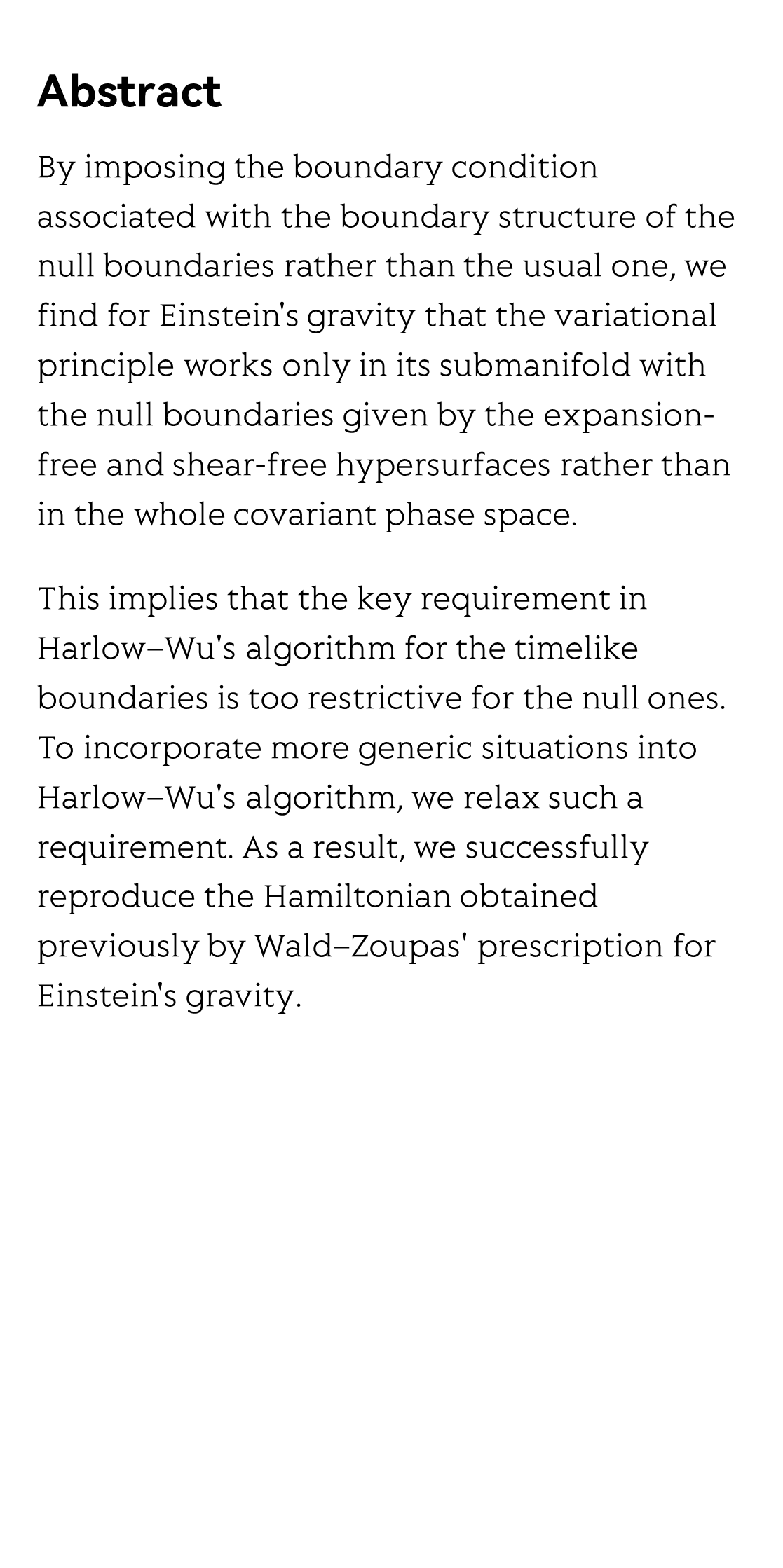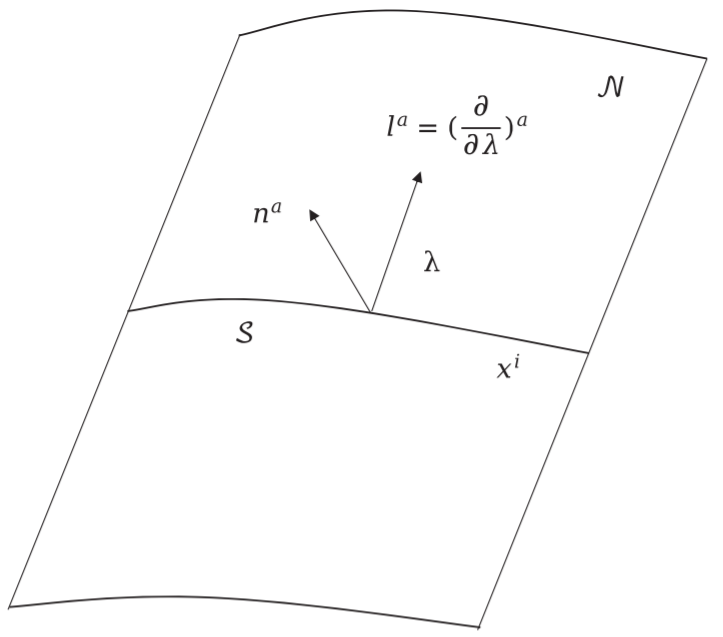(Peer-Reviewed) Covariant phase space with null boundaries
Kai Shi ¹, Xuan Wang ¹, Yihong Xiu ¹, Hongbao Zhang 张宏宝 ¹ ²
¹ Department of Physics, Beijing Normal University, Beijing 100875, China
中国 北京 北京师范大学物理学系
² Theoretische Natuurkunde, Vrije Universiteit Brussel, and The International Solvay Institutes, Pleinlaan 2, B-1050 Brussels, Belgium
Abstract
By imposing the boundary condition associated with the boundary structure of the null boundaries rather than the usual one, we find for Einstein's gravity that the variational principle works only in its submanifold with the null boundaries given by the expansion-free and shear-free hypersurfaces rather than in the whole covariant phase space.
This implies that the key requirement in Harlow–Wu's algorithm for the timelike boundaries is too restrictive for the null ones. To incorporate more generic situations into Harlow–Wu's algorithm, we relax such a requirement. As a result, we successfully reproduce the Hamiltonian obtained previously by Wald–Zoupas' prescription for Einstein's gravity.
Flicker minimization in power-saving displays enabled by measurement of difference in flexoelectric coefficients and displacement-current in positive dielectric anisotropy liquid crystals
Junho Jung, HaYoung Jung, GyuRi Choi, HanByeol Park, Sun-Mi Park, Ki-Sun Kwon, Heui-Seok Jin, Dong-Jin Lee, Hoon Jeong, JeongKi Park, Byeong Koo Kim, Seung Hee Lee, MinSu Kim
Opto-Electronic Advances
2025-09-25
Dual-frequency angular-multiplexed fringe projection profilometry with deep learning: breaking hardware limits for ultra-high-speed 3D imaging
Wenwu Chen, Yifan Liu, Shijie Feng, Wei Yin, Jiaming Qian, Yixuan Li, Hang Zhang, Maciej Trusiak, Malgorzata Kujawinska, Qian Chen, Chao Zuo
Opto-Electronic Advances
2025-09-25





